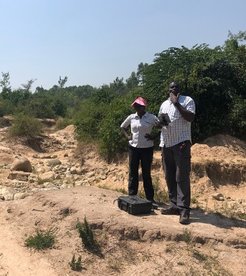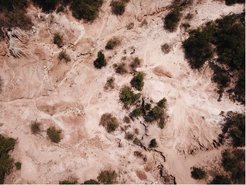Identifying Adaptive Shifts in Human Evolution During the Pleistocene
The adaptive significance of tool use to the human lineage is a central theme in human evolution. This project focuses on identifying the origin of key adaptive features in the human lineage and understanding the impact of hominin behaviors on other taxa. To accomplish this we 1) conduct fieldwork in western Kenya that integrates archaeological and paleontological records with reconstructions of paleo-habitat, and 2) analyze fossil datasets to examine the relationship between hominins and other lineages.

Our project explores new archaeological and paleontological occurrences in western Kenya to understand the mobility, dispersal, and diets of Pleistocene hominins. We examine evidence from the Oldowan (the earliest persistent tool industry) and also Middle Stone Age (MSA) toolkits. We identify patterns in hominin mobility through time by comparing trends across archaeological sites. Artifacts are linked to raw material sources using trace element geochemistry obtained through energy-dispersive X-ray fluorescence (ED-XRF) spectrometry to identify trends in raw material transport. A key question is when the technological abilities of hominin toolmakers began shifting from opportunistic tool manufacture to intentional resource transport and how tool use facilitated the dispersal of genus Homo through the Pleistocene.
Another aspect of our research applies Bayesian models to large fossil datasets. We are building databases of fossil occurrences at Pleistocene localities in Africa and Asia. This involves pooling together first appearance and last appearance dates of a variety of taxa. These datasets will allow us to test hypothesis about the ecological consequences of tool use in the human lineage and identify trends in species origination and extinction through the Pleistocene.


